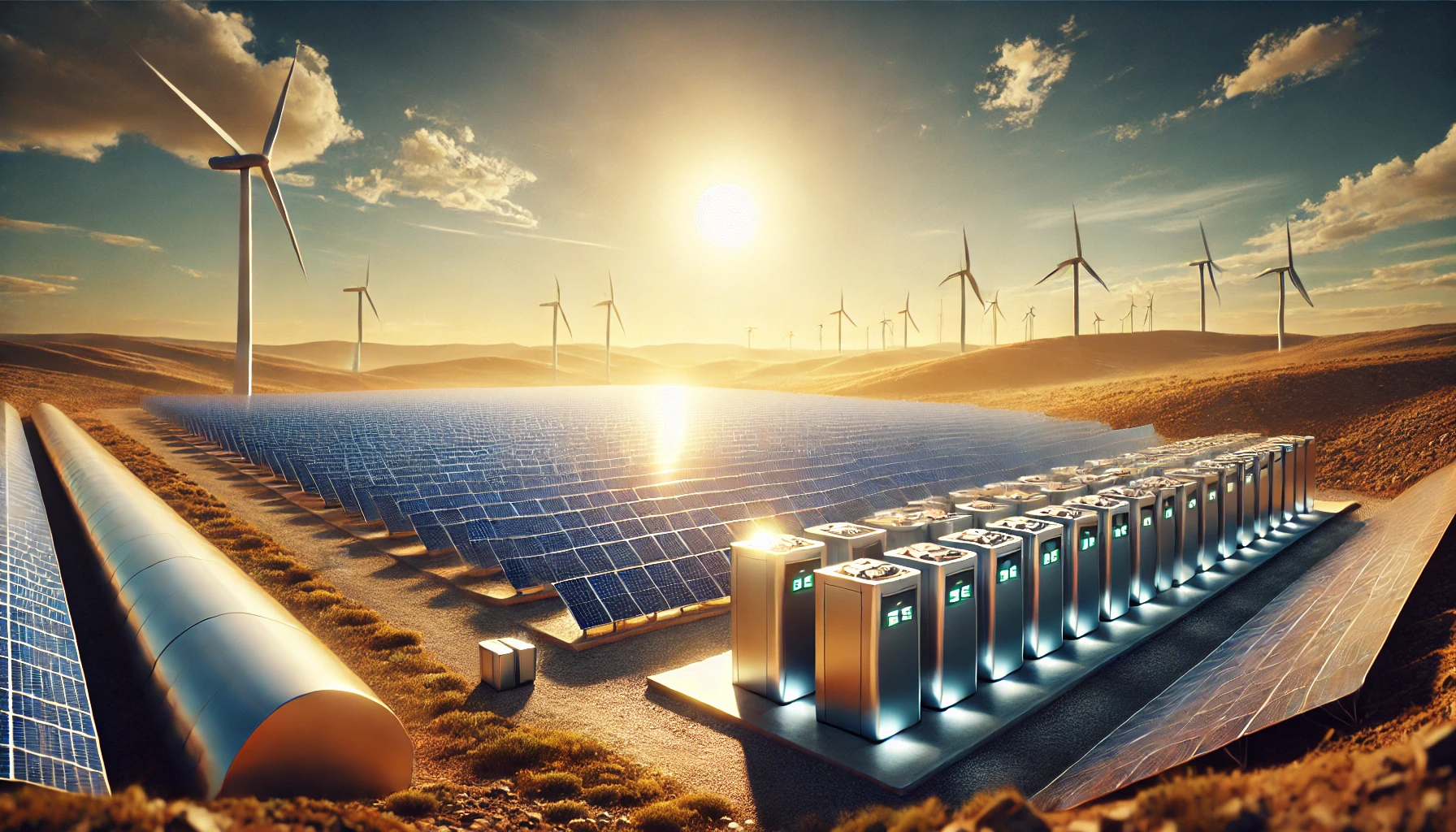The shift towards clean energy is gaining unprecedented momentum, and in 2024, one of the most impactful developments in this movement is the surge in battery storage projects across the United States. Battery storage is emerging as a vital solution for achieving a cleaner, more sustainable energy future, with its role in transforming how we generate and distribute electricity growing by leaps and bounds. In this post, we’ll dive into the remarkable rise of battery storage, its significance in the clean energy landscape, and how it’s helping pave the way for a greener, more reliable energy grid.
What’s Behind the Surge in Battery Storage?
In 2024, battery storage for electricity in the U.S. reached a groundbreaking 24 gigawatt-hours, marking a staggering 71% increase from 2023. This surge in capacity is a testament to the nation’s growing commitment to renewable energy and a cleaner, more efficient grid. But what exactly is driving this growth? The answer lies in the need for grid flexibility and reliability, combined with the rapid expansion of renewable energy sources, particularly solar power.
Reducing Reliance on Fossil Fuels
One of the most pressing concerns of our current energy system is its reliance on fossil fuel-powered “peaker” plants, which are used to meet energy demand during peak hours. These plants often rely on natural gas or coal, both of which are not only damaging to the environment but also pose significant risks to public health. Emissions from these plants contribute to air pollution and climate change, and their operation can lead to respiratory and cardiovascular problems, especially in densely populated areas.
Battery storage offers a cleaner alternative. By storing excess energy generated from renewable sources like solar and wind, batteries can supply power during times of high demand—without the need for additional fossil fuel power generation. This shift is a crucial step in reducing the harmful environmental and health impacts of traditional energy production.
Enhancing Grid Reliability with Battery Storage
In addition to offering environmental benefits, battery storage plays a vital role in enhancing the reliability of our electricity grid. Traditional grids have been designed for a world where power is generated in a central location and transmitted over long distances. However, with the rise of renewable energy sources like solar and wind, energy production is becoming more decentralized and intermittent. This means energy generation is less predictable, and the grid must be able to handle fluctuations in supply and demand.
Here’s where batteries come in. When renewable energy sources generate more power than needed—such as during the midday peak of a sunny day—batteries can store this excess energy. Later, during periods of high demand or low renewable generation (like at night or on cloudy days), these stored reserves can be deployed to meet the needs of the grid. This ability to provide backup power significantly improves grid stability and reduces the risk of blackouts or power shortages.
States Leading the Charge: California, Texas, Arizona, and Nevada
While battery storage projects are sprouting up across the country, certain states are leading the way in adopting this transformative technology. California, Texas, Arizona, and Nevada are at the forefront of the battery storage boom, thanks to their abundant renewable resources, particularly solar energy.
California: As the state with the highest solar capacity in the U.S., California has been quick to invest in battery storage systems that can store excess solar power and distribute it when needed. The state has also set ambitious clean energy targets, with a focus on reducing greenhouse gas emissions and accelerating the transition to renewable energy.
Texas: Known for its vast wind energy capacity, Texas is also making significant strides in battery storage. The state’s energy grid, which operates largely independently of the rest of the U.S., is increasingly relying on batteries to stabilize supply and meet the growing demand for clean energy.
Arizona and Nevada: These sun-drenched states are also expanding their solar power generation rapidly, which pairs perfectly with battery storage systems. Both states have made substantial investments in grid modernization and are focusing on renewable energy to ensure they can meet future energy demands while minimizing environmental impact.
The Role of Solar Energy in Battery Storage
In 2024, solar energy surpassed 100 gigawatts in capacity in the U.S., marking another milestone in the clean energy transition. Solar power is now one of the most affordable and abundant sources of energy, and its growth has been a key driver of the surge in battery storage.
By combining solar energy generation with battery storage, we can create a robust and resilient energy system that is not only cleaner but also more reliable. Solar power often peaks during the day, when energy demand is typically lower. Battery storage allows for that energy to be captured and stored for use when the sun sets or during periods of higher energy demand. This integration of solar and battery storage helps to mitigate the intermittency challenges posed by renewable energy and ensures a continuous, steady supply of clean electricity.
The Future of Battery Storage and Clean Energy
Looking ahead, the future of battery storage in the U.S. is incredibly promising. As technology continues to evolve, we can expect even more efficient and cost-effective battery solutions to emerge. Moreover, the federal government’s commitment to clean energy and energy storage innovation will play a crucial role in accelerating these developments.
The continued expansion of battery storage is expected to not only support the growing adoption of renewable energy but also drive the creation of green jobs, stimulate local economies, and contribute to a more sustainable and equitable energy system. As battery storage technologies improve, we could see a world where energy is more decentralized, cleaner, and accessible to everyone, regardless of location.
Conclusion
The rapid rise of battery storage in the U.S. is a clear signal that we are heading toward a cleaner, more sustainable energy future. By reducing reliance on fossil fuels, enhancing grid reliability, and complementing the rise of solar energy, battery storage is playing an integral role in the nation’s clean energy revolution. With states like California, Texas, Arizona, and Nevada leading the way, the future of energy is looking brighter than ever.
As we continue to push forward in this exciting era of renewable energy, battery storage will remain a key piece of the puzzle—helping to unlock a future where clean, reliable, and affordable energy is within reach for all. Stay tuned, as the energy landscape evolves and continues to reshape the way we power our lives.


















Leave a Reply